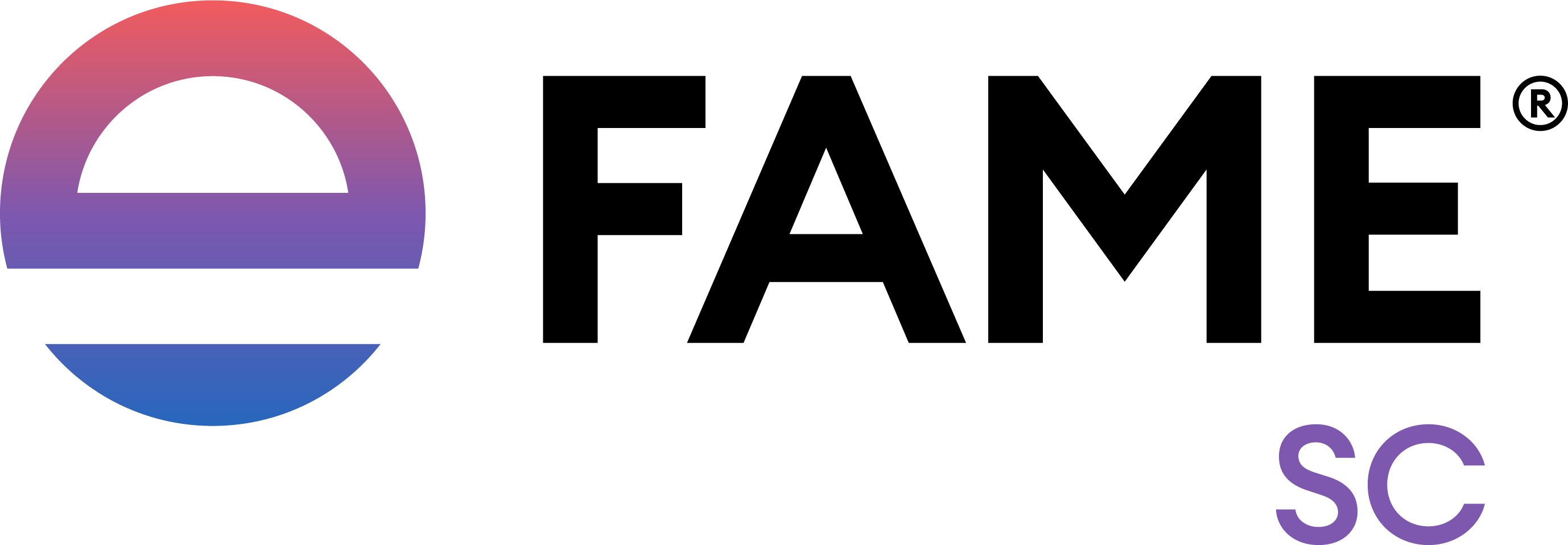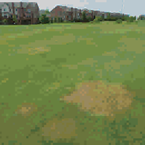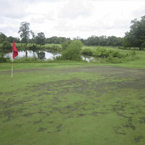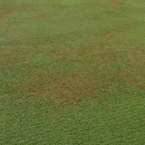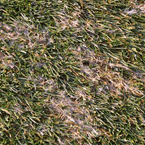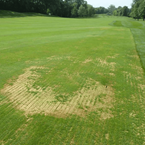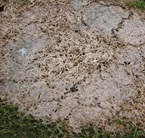// The Problem
Summer patch, caused by Magnaporthe poae, is a root, crown and stem disease that develops during periods of summer stress. Among the grasses that are most susceptible to infection are annual bluegrass, Kentucky bluegrass, and fine fescues. Older varieties of creeping bentgrass maintained at low mowing heights can also develop symptoms of summer patch. Initial infection will typically begin as soil temperatures rise above 18°C during late spring. Peak symptom expression is most commonly observed under hot summer temperatures and other plant stressors.
// What to Look For
Symptoms develop as circular patches or rings of chlorotic turf, 2.5 - 7.5 cm in size that can expand up to 0.5 - 1 m in diameter. On annual bluegrass greens, small patches may coalesce into larger, irregularly blighted areas. Initial symptoms on turf resemble those of drought stress, with leaves turning greyish-green to reddish-brown or straw-coloured. White bands may develop on leaves as a response to heat stress and damaged roots. Creeping bentgrass is usually not affected and will continue to grow in mixed stands with annual bluegrass, Kentucky bluegrass or fine fescues.
Roots, crowns and stems of infected plants will show a reddish-brown to dark brown colouration. Microscopic examination will show crown rot and extensive runner hyphae covering roots, especially in stages of advanced infection.
// Envu Solutions
Summer patch must be managed by a combination of cultural and chemical controls. Disease is favoured by hot, humid weather, high soil moisture, low mowing heights and soil compaction. Although high soil moisture creates conditions for infection, adequate irrigation and syringing are often needed to keep plants with damaged roots alive during summer conditions.
Key cultural controls include (i) relieving compaction with core aerification in the spring and fall, (ii) using ammonium fertilizers when applicable, and (iii) maintaining soil pH between 5.5 and 6. Ammonium-based, acidifying fertilizers appear to reduce symptoms, while nitrate forms increase severity; urea forms seem to have a neutral effect. Use caution when applying fungicides which include chlorothalonil, as this active ingredient has been shown to enhance symptoms of summer patch.
Preventive fungicide programs should start when average soil temperatures at a 5-10 cm depth are 18-21 °C and should be maintained through late summer. Systemic fungicides like DMIs and QoIs have the best effectiveness against summer patch and can be combined with anthracnose control programs. Since QoI resistance is present in many anthracnose populations, these applications will provide control of summer patch but another fungicide class will be needed for anthracnose control.
A key Envu solution for summer patch in Canada includes MirageStressgard. Mirage provides DMI-fungicide control of anthracnose and summer patch with low plant growth regulation effects. StressgardFormulation Technology products reduce the stress conditions that promote summer patch. Mirage Stressgard applications can control dollar spot and provide summer patch prevention simultaneously.
// Resources



